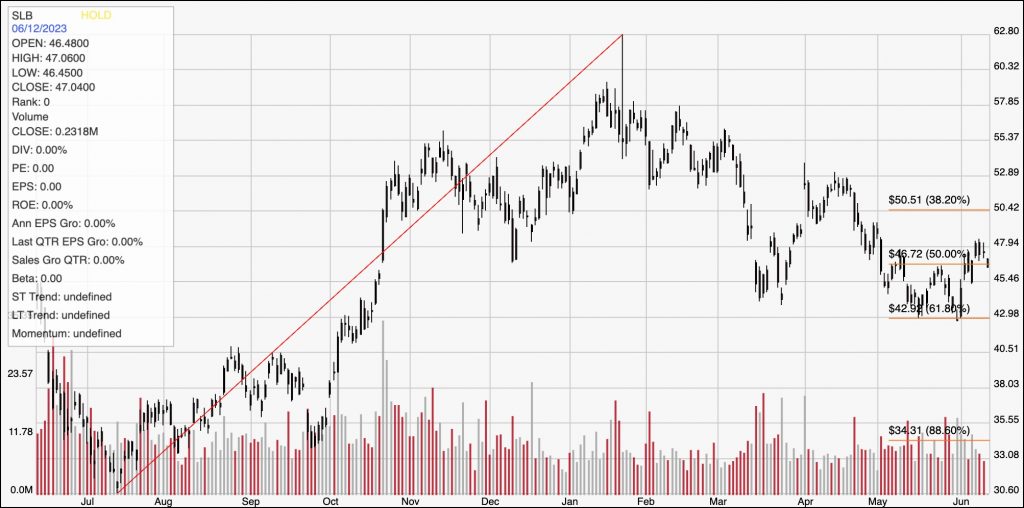No matter what the market’s current direction may be, the hunt for useful opportunities never really ends for a bargain hunter.
One of the pockets of the market that has been interesting this year is the Energy sector. Healthy demand has kept oil prices well above their 2021 levels, and that’s been a positive things for a lot of Energy-related stocks. While the now yearlong war in Ukraine continues to be a disruptive factor on both the geopolitical, economic front, and tragic on a humanitarian level, it has also kept oil and natural gas demand high for other producers, from the Middle East to North America. That can help explain, at least in part why a lot of Energy stocks have not only weathered the storm of the last year and a half better than other sectors, but also been among the market’s star performers. All across the energy supply chain, from explorers and drillers to transportation and storage, as well as the companies that provides equipment and services, higher energy prices have provided a tailwind that has helped blunt the opposing headwind of rising input costs.
Schlumberger N.V. (SLB) is one of the largest companies in the world in the Energy Equipment & Services industry. After falling to a July 2022 low at around $30.50, the stock staged an impressive upward trend that saw its peak in January at about $63. From that point, the stock has dropped into a downward trend that appears to have bottomed in the last month at around $43, with the stock now at about $47. Are the company’s fundamentals, contrasted against that drop in price, strong enough to make a case for SLB as a tempting value prospect? Let’s take a look.
Fundamental and Value Profile
Schlumberger N.V. provides technology for reservoir characterization, drilling, production and processing to the oil and gas industry. The Company’s segments include Reservoir Characterization Group, Drilling Group, Production Group and Cameron Group. The Reservoir Characterization Group consists of the principal technologies involved in finding and defining hydrocarbon resources. The Drilling Group consists of the principal technologies involved in the drilling and positioning of oil and gas wells. The Production Group consists of the principal technologies involved in the lifetime production of oil and gas reservoirs and includes Well Services, Completions, Artificial Lift, Integrated Production Services (IPS) and Schlumberger Production Management (SPM). The Cameron Group consists of the principal technologies involved in pressure and flow control for drilling and intervention rigs, oil and gas wells and production facilities. SLB has a current market cap of $67 billion.
Earnings and Sales Growth: Over the last twelve months, earnings increased 85.3%, while sales were almost 30% higher. In the last quarter, earnings declined by -11.27% while sales were -1.81% lower. SLB’s operating profile is healthy, but has narrowed; Net Income versus Revenue over the last year was 12.94%, and tapered in the last quarter to 12.07%.
Free Cash Flow: SLB’s Free Cash Flow is generally healthy, at almost $2.3 billion over the last twelve months. That represents a small increase from $2.2 billion a year ago, but did decline from $2.6 billion at the end of 2022. The current number translates to a very modest Free Cash Flow Yield of 3.43%.
Debt to Equity: SLB has a debt/equity ratio of .58, a conservative number that signals a conservative approach to leverage. Cash and liquid assets in the last quarter were about $2.5 billion versus about $10.7 billion in long-term debt. it is worth mentioning that in 2021, long-term was more than $13.1 billion. The company’s operating profile suggest the company should have no problem servicing its debt.
Dividend: SLB pays an annual dividend of $1.00 per share, which at its current price translates to a dividend yield of about 2.1%. After slashing the dividend during the pandemic to about $.50 per share by the start of 2022, management increased the dividend twice over the course of 2022.
Price/Book Ratio: there are a lot of ways to measure how much a stock should be worth; but I like to worth with a combination of Price/Book and Price/Cash Flow analysis. Together, these measurements provide a long-term target at almost $22 per share. That means the stock is overvalued, with more than -53% downside from the stock’s current price, and a useful discount at around $17.50. It is also worth noting that at the start of 2023, this same analysis yielded a fair value target at around $26.50.
Technical Profile
Here’s a look at the stock’s latest technical chart.
Current Price Action/Trends and Pivots: The chart above displays the last year of price activity, with the diagonal red line tracing the stock’s rally from about $30.50 in July 2022 to a peak at around $63 in January. It also provides the baseline for the Fibonacci retracement lines shown on the right side of the chart. The stock dropped into a clear downward trend from that high, with what looks like a useful trend bottom forming in May at around $43, right around the 61.8% retracement line. The stock has pushed to about $47 from that point, with immediate resistance at the stock latest pivot high at around $48, and current support expected at about $45.50. A push above $48 will find next resistance at around $50.50, while a drop below $43 should find next support at around $40, based on pivot highs seen in September and October of last year.
Near-term Keys: There really isn’t any way to suggest that SLB’s value proposition right now is useful, even with the company’s generally healthy fundamental profile. That means that the best probabilities to work with this stock lie with short-term trading strategies; if the stock drops below $43, consider shorting the stock or buying put options, using $40 as a practical profit target. A push above $48 could offer an interesting signal to buy the stock or work with call options, using $50.50 as a a useful profit target on a bullish trade.
